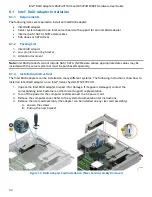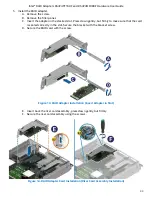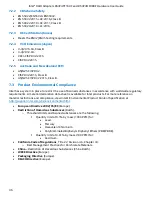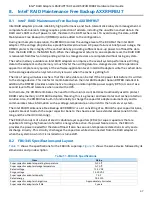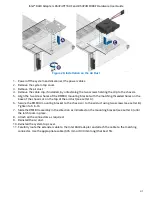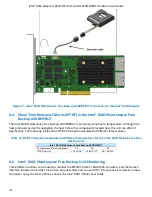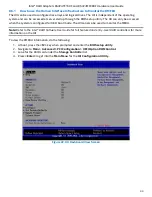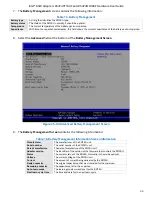
Intel® RAID Adapters RS3P4TF160F and RS3P4MF088F Hardware User Guide
46
Glossary
Term
Description
BIOS
Acronym for basic input/output system. Software that provides basic read/write capability. Usually
kept as firmware (ROM-based).
The system BIOS on the motherboard of a computer boots and controls the system. The BIOS on the
host adapter acts as an extension of the system BIOS.
Configuration
Refers to the way a computer is set up, the combined hardware components (computer, monitor,
keyboard, and peripheral devices) that make up a computer system, or the software settings that allow
the hardware components to communicate with each other.
Device driver
A program that permits a microprocessor (through the operating system) to direct the operation of a
peripheral device.
Domain validation
A software procedure in which a host queries a device to determine its ability to communicate at the
negotiated data rate.
DRAM cache memory
Dynamic random access memory (DRAM) is a type of memory typically used for data or program code
that a computer processor needs to function. DRAM is a common type of random access memory
(RAM) used in personal computers (PCs), workstations, and servers.
Drive group
A group of physical drives that combines the storage space on the drives into a single segment of
storage space. A hot spare drive does not actively participate in a drive group.
EEPROM
Acronym for electronically erasable programmable read-only memory. It is a memory chip that
typically stores configuration information, as it provides stable storage for long periods without
electricity and can be reprogrammed. See NVRAM.
EDLC
Electric Double-Layer Capacitors
External SAS device
A SAS device installed outside the computer cabinet. These devices are connected using specific types
of shielded cables.
Fusion-MPT architecture
Acronym for Fusion-Message Passing Technology architecture. Fusion-MPT consists of several main
elements: Fusion-MPT firmware, the Fiber Channel and SCSI hardware, and the operating system-level
drivers that support these architectures. Fusion-MPT architecture offers a single binary, operating
system driver that supports both Fiber Channel and SCSI devices.
Host
The computer system in which a RAID controller is installed. It uses the RAID controller to transfer
information to and from devices attached to the SCSI bus.
Host adapter board
A circuit board or circuit that provides a device connection to the computer system.
Hot spare
An idle, powered on, standby drive that is ready for immediate use if a drive failure occurs. A hot spare
does not contain any user data. A hot spare can be dedicated to a single redundant array or it can be
part of the global hot-spare pool for all arrays managed by the controller.
When a drive fails, the controller firmware automatically replaces and rebuilds the data from the failed
drive to the hot spare. Data can be rebuilt only from virtual drives with redundancy (RAID levels 1, 5, 6,
10, 50, and 60; not RAID level 0), and the hot spare must have sufficient capacity.
Internal SAS device
A SAS device installed inside the computer cabinet. These devices are connected by using a shielded
cable.
Main memory
The part of computer memory that is directly accessible by the CPU (usually synonymous with RAM).
NVRAM
Acronym for non-volatile random access memory. An EEPROM (electronically erasable read-only
memory) chip that stores configuration information. See EEPROM.
PCI
Acronym for peripheral component interconnect. A high-performance, local bus specification that
allows the connection of devices directly to computer memory. The PCI Local Bus allows transparent
upgrades from 32-bit data path at 33 MHz to 64-bit data path at 33 MHz, and from 32-bit data path at
66 MHz to 64-bit data path at 66 MHz.
PCIe*
Acronym for Peripheral Component Interconnect Express*. A high-performance, local bus specification
that allows the connection of devices directly to computer memory. PCIe is a two-way, serial
connection that transfers data on two pairs of point-to-point data lines.
PCIe goes beyond the PCI specification in that it is intended as a unifying I/O architecture for various
systems: desktops, workstations, mobile, server, communications, and embedded devices.
Peripheral devices
A piece of hardware (such as a video monitor, drive, printer, or CD-ROM) used with a computer and
under the control of the computer. SCSI peripherals are controlled through an Intel® RAID controller
(host adapter).
PFK
Product Feature Key. A device that unlocks some additional features on the product

